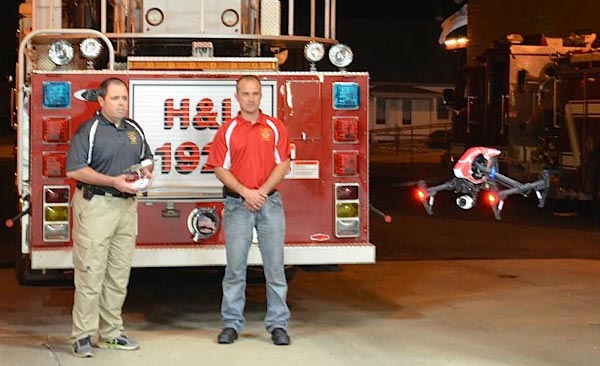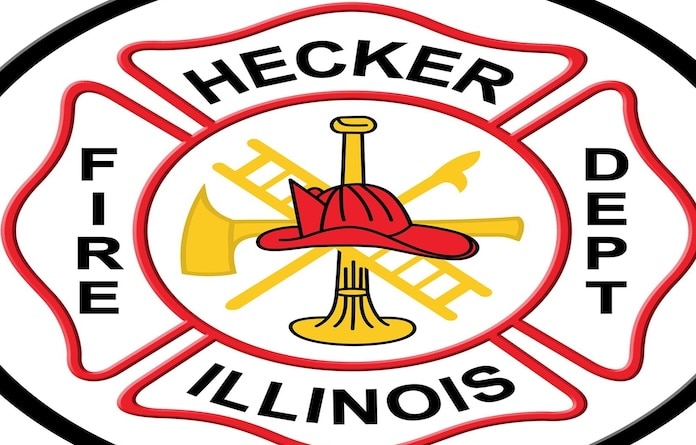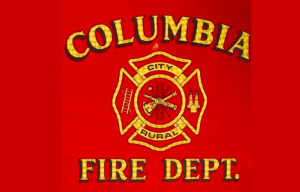Drone is Columbia’s newest firefighter

Pictured, Brad Roessler (left) flies the Columbia Fire Department drone at the firehouse via remote control as Steve Doyle looks on. (Andrea Saathoff photo)
Though trained to brave the extreme conditions of a smoldering fire or the perils of an icy pond, Columbia firefighters know that with each call, safety is never 100 percent ensured.
Columbia Fire Chief Mike Roediger knows this quite well, and does his best to keep the risk factor to a minimum. In some cases, avoiding injury involves training and experience.
In others, recent advances in technology have helped to evade hazards. The Columbia Fire Department has come to know the benefits of technology after recently purchasing an unmanned aerial vehicle.
“(We were thinking about) the safety of the firemen. Especially when it comes to the Mississippi River being in our district,” Roediger said. “Instead of putting a boat out on the water when we don’t know where the person is, we can bring the drone out.”
What Roediger is referring to happens more often than one might think. The fire department was requested for the use of its rescue boat to recover the body of a missing kayaker in the summer of 2016, and again in the fall of 2016 to search for a woman who jumped from the Jefferson Barracks Bridge.
The drone was used in a similar situation at the beginning of the month in searching for a possible jumper off the bridge. According to Roediger, the drone helps in these kinds of scenarios because of a claw feature that allows the drone to carry a life jacket or rope to someone in the water.
CFD drone pilots Brad Roessler, Steve Doyle and Drew Pansing can also use the drone’s infrared camera to pick up heat signatures in the water. The infrared camera is accompanied by a regular camera and zoom camera.
“It’s kind of like your camera lens. It’s extra, but once you have it, it’s great,” said Roessler, who initiated the CFD drone program.
With the camera feature, Roediger said firefighters can hover the drone over a structure fire to show video of the inside of the structure.
“We can see now where we need to point the nozzles to get the fire out quickly,” he said.
Additionally, Roessler said interdepartmental use is common. One such instance involved a search and rescue mission when students from Cahokia High School went missing on a field trip at the Fults Hill Nature Preserve.
“It’s a valuable thing. A lot of places ask us if we can assist them,” Roessler said.
Other interdepartmental uses include using drone photography for accident reconstruction, an active shooter situation and fleeing suspects. The CFD also uses a livestream feature connected to YouTube to see flooding or in a HAZMAT situation.
To use the drone requires an understanding of Federal Aviation Administration guidelines, monthly training and quarterly requirements, and an FAA certification that comes from a pilot course and certification exam. Roediger said the department plans to add two or three more certified pilots.
“I think it’s good and it’s going to be used for a lot of awesome things. You can see things really quickly with the camera,” Roessler said.
The Pattonville Fire Protection District has had a pair of drones for a few years, and Roessler said the Smithton Fire Department also uses drone technology. He added that Weber Chevrolet donated the cost of the CFD drone and equipment.






